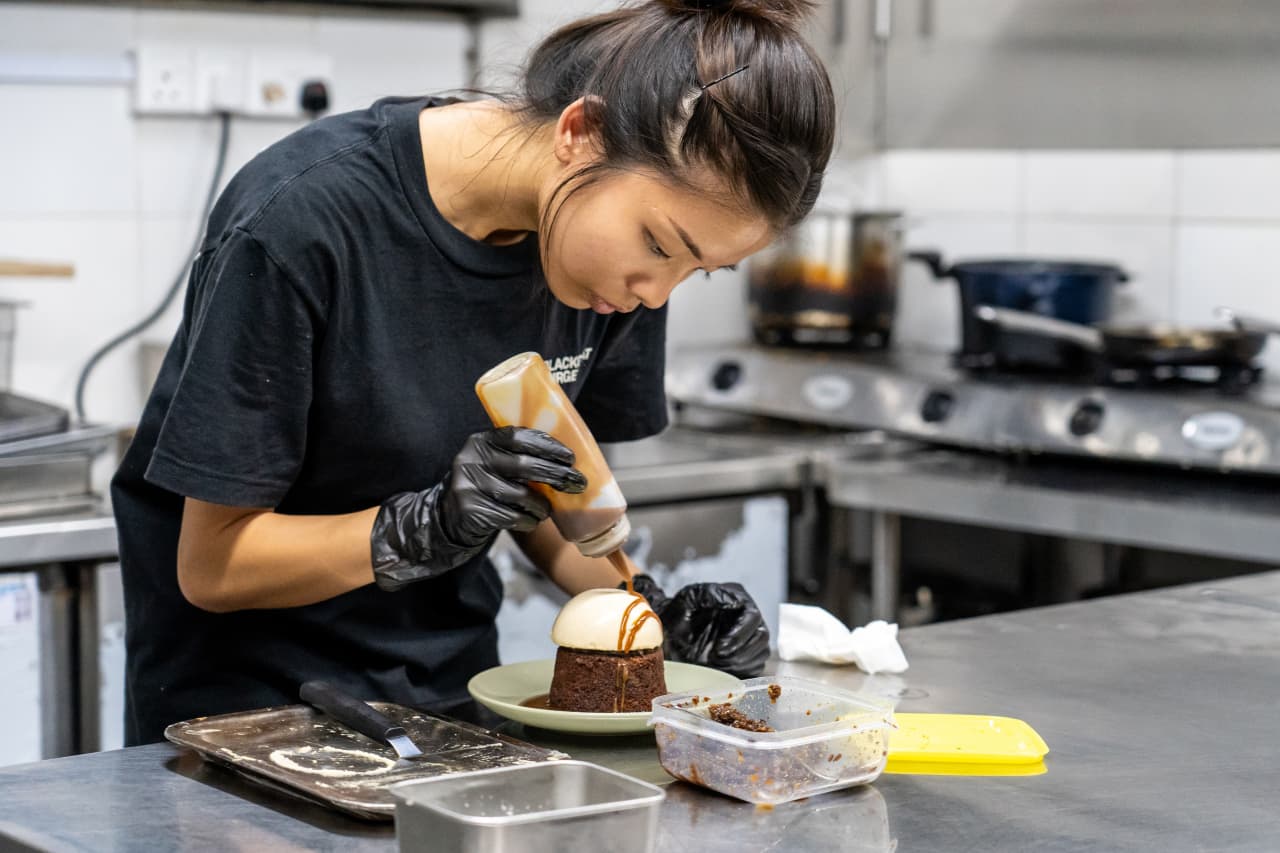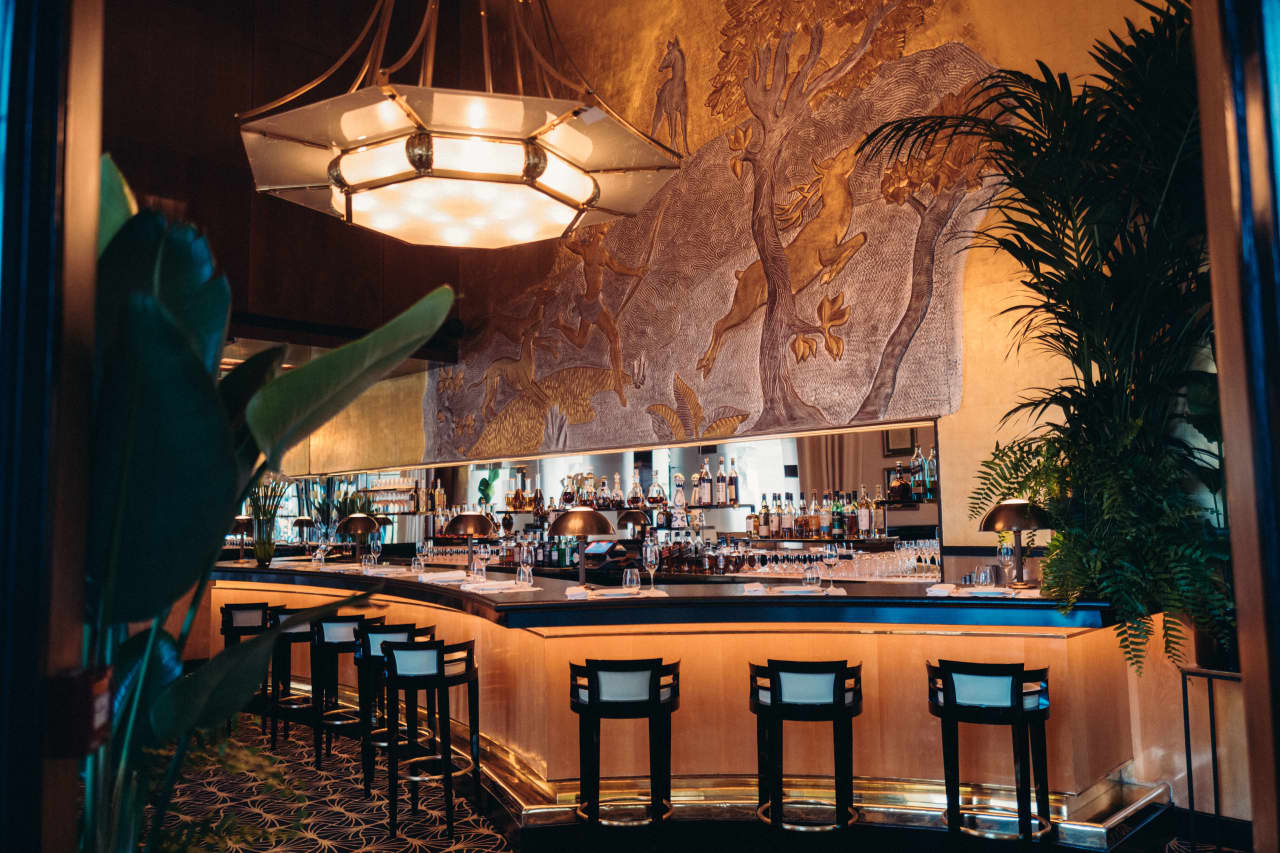Work From…Anywhere? Tips From Travellers Who Do ‘Workcations’ Right
Want to make your time off go further? Take advantage of remote work to set up in a holiday location for a week, even a month. The risk: missing the point of travelling in the first place.
ASHLEY SCHWARTAU escaped to a Mexican beach town just two weeks after starting a new job for a Chicago-based insurance company. It’s not that Schwartau, 38, is a late-blooming spring breaker. She and her husband both work remotely, so when winter arrived at home in Nashville, Tenn., the pair decided to clock in from a vacation rental with a pool in Playa del Carmen.
For the next four weeks, the couple took calls from their temporary home, while their 4-year-old son attended a bilingual preschool whose $350 monthly tuition would be implausible back in Nashville. After hours, the trio played at the nearby beach, lounged poolside or grazed at neighbourhood taco stands. Following a weeklong-vacation chaser at month’s end, they returned to Tennessee restored. “It’s hard for working parents to truly find moments of relaxation, and that was one of the most relaxing trips we’ve ever taken,” said Schwartau, who documented the trip on her blog to inspire others looking to expand their own definitions of remote work.
Unlike some full-time “digital nomads”—who skew young, male and child-free—Schwartau has no plans to permanently swap home life for stints in Lisbon or Bali. Instead, Schwartau used her hybrid “workcation” to capitalise on a remote-friendly job and temporarily set up shop away from home’s routines and responsibilities.
The trip also let her save some paid time off while still traveling, a strategy that appeals to workers in the U.S., where the average private-sector job affords just 11 days off after a year. With employers increasingly offering flexible work options, workcations seem to be a pandemic-accelerated trend with staying power. A 2023 study by Deloitte showed that one in five travellers planned to do some work on their primary summer trips, with many using flexible policies to eke out additional time away.
Still, obstacles abound. Jet lag can sap work output, sand will destroy your computer and dutifully clocking hours a block from a beach invites intense FOMO. It takes finesse to make workcations work—here’s how to pull one off.
Get in the (time) zone
Going too far afield—or heading in the wrong direction—can tug routines out of alignment. Dan Hammel of Benicia, Calif., works for a tech concern that follows Central time and offers staffers two annual work-from-anywhere weeks. Last fall, Hammel spent one off-kilter week working from the Italian city of Bologna. “My hours in Europe were probably about 4 p.m. to midnight,” he said of the need to align with his stateside colleagues’ workdays. After days spent touring nearby Modena and Parma with his wife, Hammel found the schedule challenging. “I like to be in bed around 10,” said Hammel, 45.
To avoid red-eye marathons, follow your natural sleep pattern to the optimal time zone. For Hammel, that meant Maui, where he worked remotely in May. “I would get up at 5 a.m. and would be done around noon,” he said. “We would have the whole rest of the day to nap, relax for a little bit after my workday, hit the beach, go to dinner.”
Make space
Remote work might conjure Instagram shots of laptops lolling on beach chairs, but such scenes don’t translate to meaningful productivity. Deloitte found that more than half of all travelers look for work-friendly spaces when booking accommodation. William DeSousa, 73, a public-relations professional from Osterville, Mass., craves more space than hotel rooms offer: He’s a villa guy.
For 16 years, he’s spent a month working from Greece with his husband and has learned that walls do wonders. “We both need to be on phones, or be on Zoom calls,” he said. “I think separate workspaces work best for couples.” This year, the pair will enjoy the beach-and-taverna circuit while clocking in from villas in Santorini and Crete.
Other travellers opt for hotels—such as Mama Shelter Shoreditch London and the Hoxton Chicago—with dedicated co-working areas and brisk internet. Whatever you decide, ask for bandwidth details before booking: The website Global Nomad Guide, which advises remote workers, recommends download speeds of at least 50 Mbps.
Log off
Many remote workers are loath to shut devices down, which can lead to post-workcation regrets. Commit in advance to logging off, said Jaime Kurtz, professor of psychology at James Madison University and author of “The Happy Traveler: Unpacking the Secrets of Better Vacations.” Tell yourself, “‘I’m going to work this many hours a day, and then I will go out and take advantage of the place,’” Kurtz said. She suggested travellers seek experiences that sideline devices completely, such as riding a bike or joining a food tour.
And while remote work can help PTO go farther, don’t mistake working getaways for more truly replenishing vacations. That’s why many workcationers, including Schwartau and Hammel, follow remote stints with actual time off, using working trips as a launchpad for dedicated travel time.
Jessica de Bloom, a professor of psychology at the University of Groningen in the Netherlands, who studies the blurring frontiers between work and leisure time, considers true disconnection essential to thriving. A request for comment for this story prompted an out-of-office message, suggesting de Bloom lives by her own findings. “I am currently enjoying a vacation,” the auto-response read. “I choose not to work and check my emails, because research showed that working during holidays can be detrimental for my health.”
The Wall Street Journal is not compensated by retailers listed in its articles as outlets for products. Listed retailers frequently are not the sole retail outlets.
 Copyright 2020, Dow Jones & Company, Inc. All Rights Reserved Worldwide. LEARN MORE
Copyright 2020, Dow Jones & Company, Inc. All Rights Reserved Worldwide. LEARN MORE
This stylish family home combines a classic palette and finishes with a flexible floorplan
Just 55 minutes from Sydney, make this your creative getaway located in the majestic Hawkesbury region.
No trip to Singapore is complete without a meal (or 12) at its hawker centres, where stalls sell multicultural dishes from generations-old recipes. But rising costs and demographic change are threatening the beloved tradition.
In Singapore, it’s not unusual for total strangers to ask, “Have you eaten yet?” A greeting akin to “Good morning,” it invariably leads to follow-up questions. What did you eat? Where did you eat it? Was it good? Greeters reserve the right to judge your responses and offer advice, solicited or otherwise, on where you should eat next.
Locals will often joke that gastronomic opinions can make (and break) relationships and that eating is a national pastime. And why wouldn’t it be? In a nexus of colliding cultures—a place where Malays, Indians, Chinese and Europeans have brushed shoulders and shared meals for centuries—the mix of flavours coming out of kitchens in this country is enough to make you believe in world peace.
While Michelin stars spangle Singapore’s restaurant scene , to truly understand the city’s relationship with food, you have to venture to the hawker centres. A core aspect of daily life, hawker centres sprang up in numbers during the 1970s, built by authorities looking to sanitise and formalise the city’s street-food scene. Today, 121 government-run hawker centres feature food stalls that specialise in dishes from the country’s various ethnic groups. In one of the world’s most expensive cities, hawker dishes are shockingly cheap: A full meal can cost as little as $3.
Over the course of many visits to Singapore, I’ve fallen in love with these places—and with the scavenger hunts to find meals I’ll never forget: delicate bowls of laksa noodle soup, where brisk lashes of heat interrupt addictive swirls of umami; impossibly flaky roti prata dipped in curry; the beautiful simplicity of an immaculately roasted duck leg. In a futuristic and at times sterile city, hawker centres throw back to the past and offer a rare glimpse of something human in scale. To an outsider like me, sitting at a table amid the din of the lunch-hour rush can feel like glimpsing the city’s soul through all the concrete and glitz.
So I’ve been alarmed in recent years to hear about the supposed demise of hawker centres. Would-be hawkers have to bid for stalls from the government, and rents are climbing . An upwardly mobile generation doesn’t want to take over from their parents. On a recent trip to Singapore, I enlisted my brother, who lives there, and as we ate our way across the city, we searched for signs of life—and hopefully a peek into what the future holds.
At Amoy Street Food Centre, near the central business district, 32-year-old Kai Jin Thng has done the math. To turn a profit at his stall, Jin’s Noodle , he says, he has to churn out at least 150 $4 bowls of kolo mee , a Malaysian dish featuring savoury pork over a bed of springy noodles, in 120 minutes of lunch service. With his sister as sous-chef, he slings the bowls with frenetic focus.
Thng dropped out of school as a teenager to work in his father’s stall selling wonton mee , a staple noodle dish, and is quick to say no when I ask if he wants his daughter to take over the stall one day.
“The tradition is fading and I believe that in the next 10 or 15 years, it’s only going to get worse,” Thng said. “The new generation prefers to put on their tie and their white collar—nobody really wants to get their hands dirty.”
In 2020, the National Environment Agency , which oversees hawker centres, put the median age of hawkers at 60. When I did encounter younger people like Thng in the trade, I found they persevered out of stubbornness, a desire to innovate on a deep-seated tradition—or some combination of both.
Later that afternoon, looking for a momentary reprieve from Singapore’s crushing humidity, we ducked into Market Street Hawker Centre and bought juice made from fresh calamansi, a small citrus fruit.
Jamilah Beevi, 29, was working the shop with her father, who, at 64, has been a hawker since he was 12. “I originally stepped in out of filial duty,” she said. “But I find it to be really fulfilling work…I see it as a generational shop, so I don’t want to let that die.” When I asked her father when he’d retire, he confidently said he’d hang up his apron next year. “He’s been saying that for many years,” Beevi said, laughing.
More than one Singaporean told me that to truly appreciate what’s at stake in the hawker tradition’s threatened collapse, I’d need to leave the neighbourhoods where most tourists spend their time, and venture to the Heartland, the residential communities outside the central business district. There, hawker centres, often combined with markets, are strategically located near dense housing developments, where they cater to the 77% of Singaporeans who live in government-subsidised apartments.
We ate laksa from a stall at Ghim Moh Market and Food Centre, where families enjoyed their Sunday. At Redhill Food Centre, a similar chorus of chattering voices and clattering cutlery filled the space, as diners lined up for prawn noodles and chicken rice. Near our table, a couple hungrily unwrapped a package of durian, a coveted fruit banned from public transportation and some hotels for its strong aroma. It all seemed like business as usual.
Then we went to Blackgoat . Tucked in a corner of the Jalan Batu housing development, Blackgoat doesn’t look like an average hawker operation. An unusually large staff of six swirled around a stall where Fikri Amin Bin Rohaimi, 24, presided over a fiery grill and a seriously ambitious menu. A veteran of the three-Michelin-star Zén , Rohaimi started selling burgers from his apartment kitchen in 2019, before opening a hawker stall last year. We ordered everything on the menu and enjoyed a feast that would astound had it come out of a fully equipped restaurant kitchen; that it was all made in a 130-square-foot space seemed miraculous.
Mussels swam in a mushroom broth, spiked with Thai basil and chives. Huge, tender tiger prawns were grilled to perfection and smothered in toasted garlic and olive oil. Lamb was coated in a whisper of Sichuan peppercorns; Wagyu beef, in a homemade makrut-lime sauce. Then Ethel Yam, Blackgoat’s pastry chef prepared a date pudding with a mushroom semifreddo and a panna cotta drizzled in chamomile syrup. A group of elderly residents from the nearby towers watched, while sipping tiny glasses of Tiger beer.
Since opening his stall, Rohaimi told me, he’s seen his food referred to as “restaurant-level hawker food,” a categorisation he rejects, feeling it discounts what’s possible at a hawker centre. “If you eat hawker food, you know that it can often be much better than anything at a restaurant.”
He wants to open a restaurant eventually—or, leveraging his in-progress biomedical engineering degree, a food lab. But he sees the modern hawker centre not just as a steppingstone, but a place to experiment. “Because you only have to manage so many things, unlike at a restaurant, a hawker stall right now gives us a kind of limitlessness to try new things,” he said.
Using high-grade Australian beef and employing a whole staff, Rohaimi must charge more than typical hawker stalls, though his food, around $12 per 100 grams of steak, still costs far less than high-end restaurant fare. He’s found that people will pay for quality, he says, even if he first has to convince them to try the food.
At Yishun Park Hawker Centre (now temporarily closed for renovations), Nurl Asyraffie, 33, has encountered a similar dynamic since he started Kerabu by Arang , a stall specialising in “modern Malay food.” The day we came, he was selling ayam percik , a grilled chicken leg smothered in a bewitching turmeric-based marinade. As we ate, a hawker from another stall came over to inquire how much we’d paid. When we said around $10 a plate, she looked skeptical: “At least it’s a lot of food.”
Asyraffie, who opened the stall after a spell in private dining and at big-name restaurants in the region, says he’s used to dubious reactions. “I think the way you get people’s trust is you need to deliver,” he said. “Singapore is a melting pot; we’re used to trying new things, and we will pay for food we think is worth it.” He says a lot of the same older “uncles” who gawked at his prices, are now regulars. “New hawkers like me can fill a gap in the market, slightly higher than your chicken rice, but lower than a restaurant.”
But economics is only half the battle for a new generation of hawkers, says Seng Wun Song, a 64-year-old, semiretired economist who delves into the inner workings of Singapore’s food-and-beverage industry as a hobby. He thinks locals and tourists who come to hawker centers to look for “authentic” Singaporean food need to rethink what that amorphous catchall word really means. What people consider “heritage food,” he explains, is a mix of Malay, Chinese, Indian and European dishes that emerged from the country’s founding. “But Singapore is a trading hub where people come and go, and heritage moves and changes. Hawker food isn’t dying; it’s evolving so that it doesn’t die.”
This stylish family home combines a classic palette and finishes with a flexible floorplan
Just 55 minutes from Sydney, make this your creative getaway located in the majestic Hawkesbury region.






















